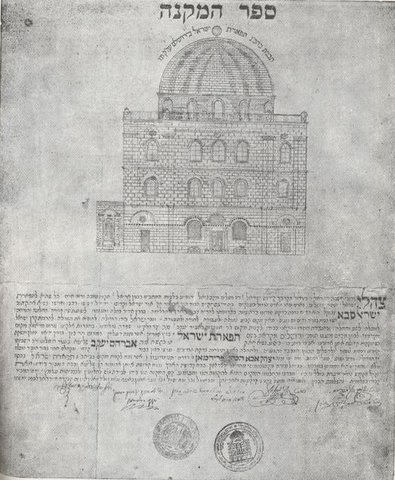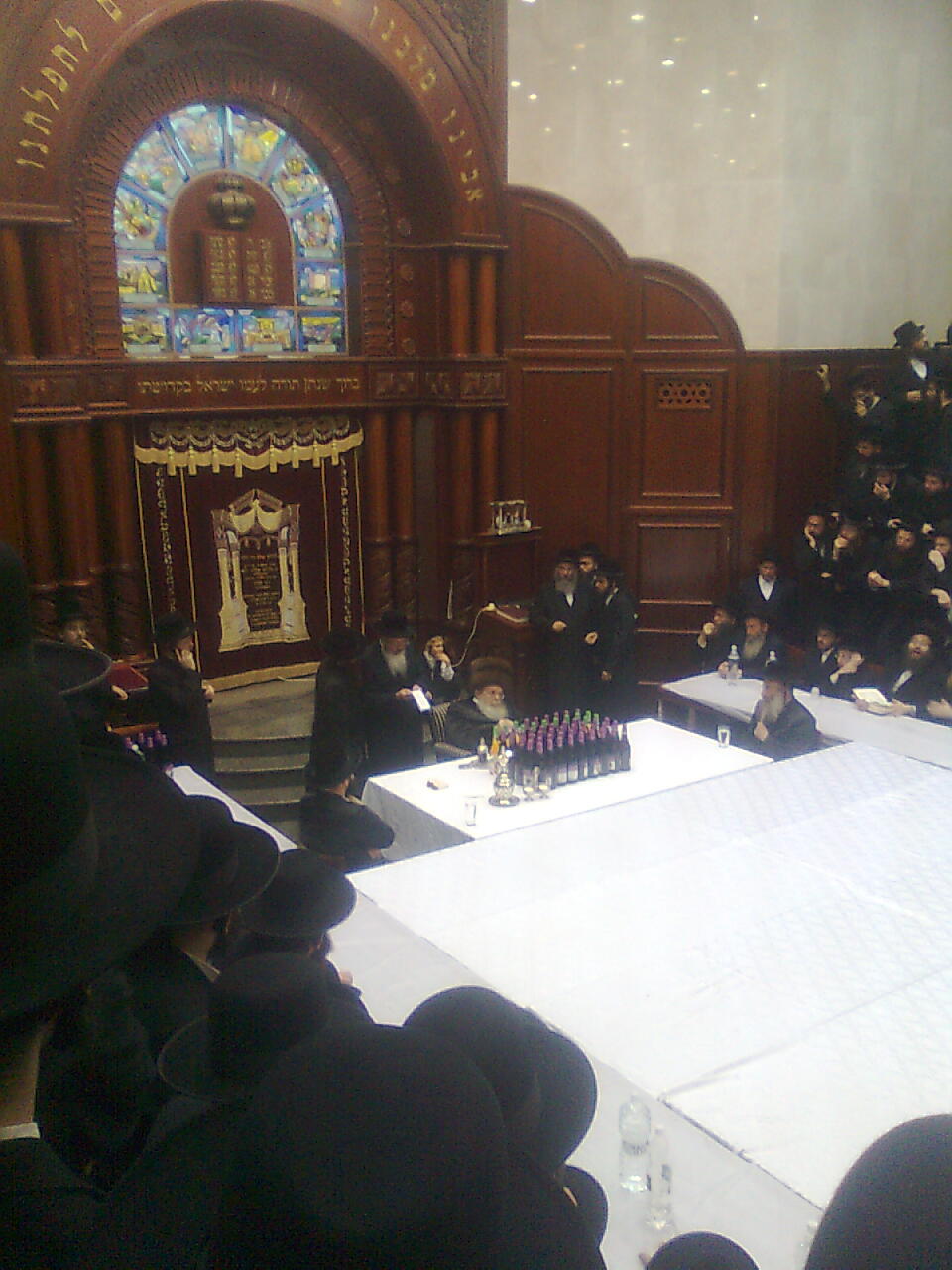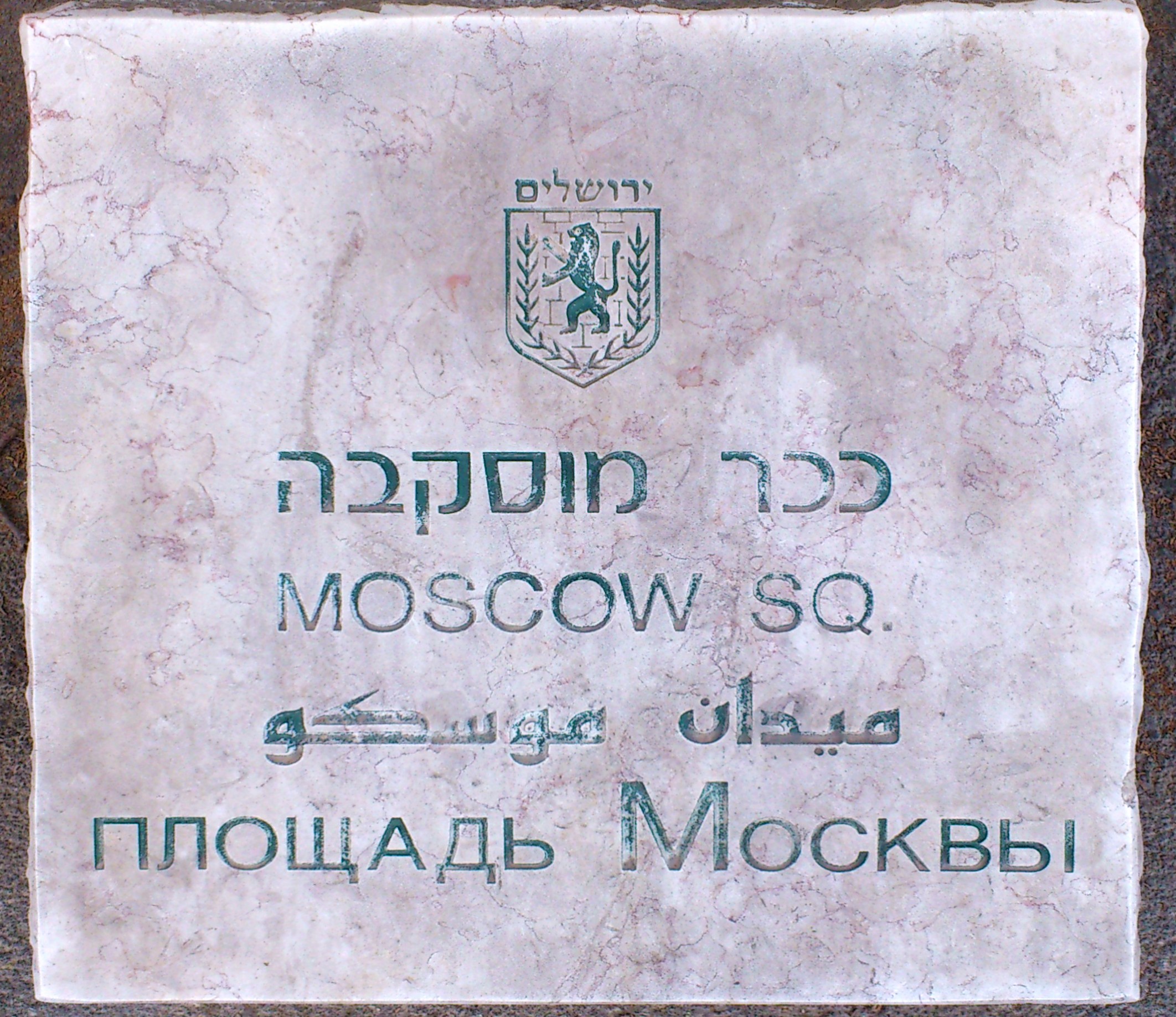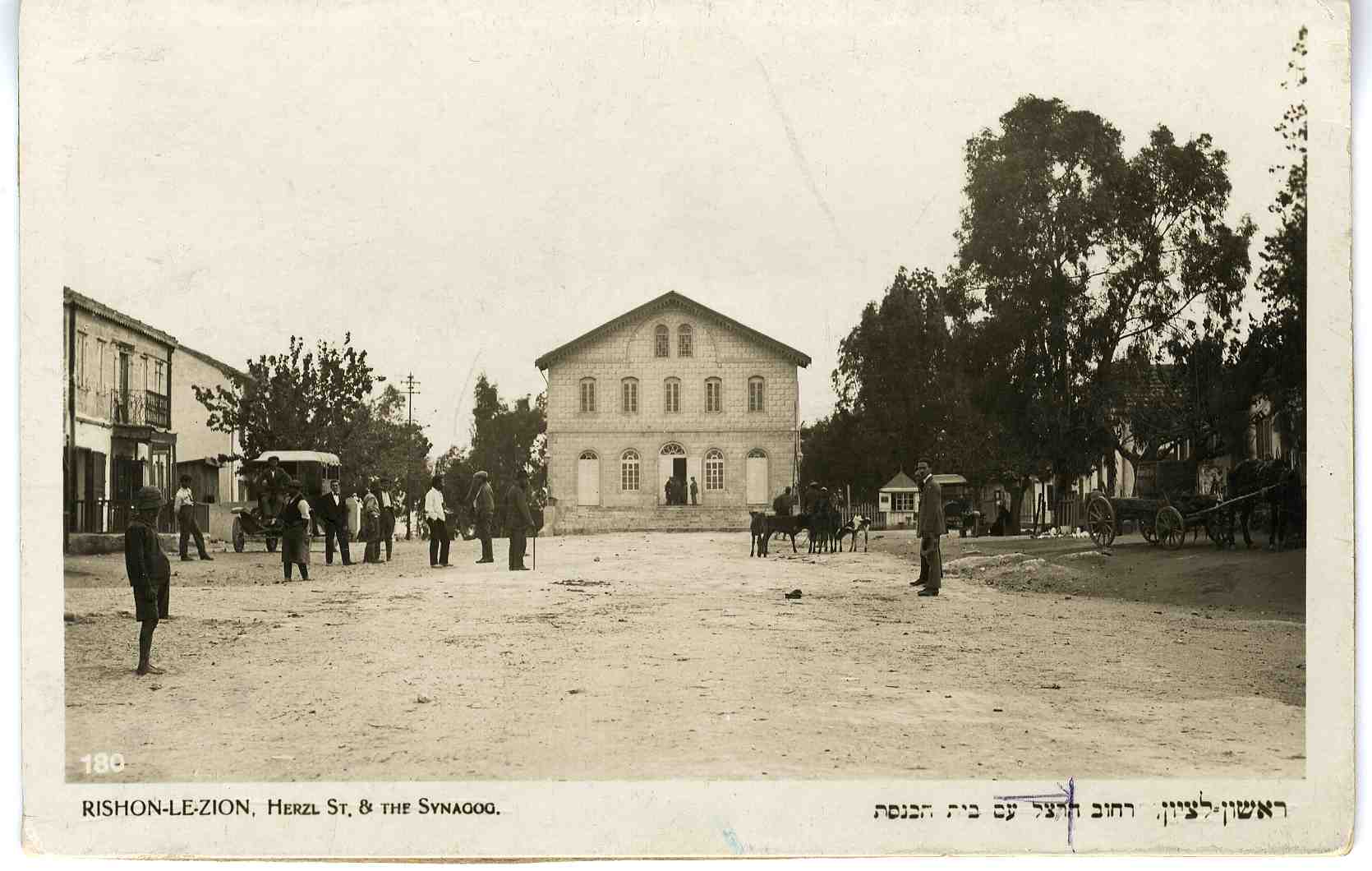|
Tiferet Yisrael Synagogue
Tiferet Yisrael Synagogue ( he, בית הכנסת תפארת ישראל; Ashkenazi Hebrew: Tiferes Yisroel), most often spelled Tiferet Israel, also known as the Nisan Bak Shul ( yi, ניסן ב"ק שול), after its co-founder, Nisan Bak was a prominent synagogue between 1872 and 1948 in the Jewish Quarter of the Old City of Jerusalem. The synagogue was inaugurated in 1872 by the Ruzhin Hasidim among the members of the Old Yishuv and was destroyed by the Jordanian Arab Legion on 21 May 1948 during the Battle for Jerusalem of the 1948 Arab–Israeli War. The synagogue was left as ruins after the recapture of the Old City in the Six-Day War. In November 2012 the Jerusalem municipality announced its approval for plans to rebuild the synagogue. The cornerstone was laid on May 27, 2014. Origins and name The synagogue was built in the 1860s by the followers of Rabbi Yisrael Friedman of Ruzhin and his son Rabbi Avrohom Yaakov of Sadigura, and was named "Tiferet Yisrael" after ... [...More Info...] [...Related Items...] OR: [Wikipedia] [Google] [Baidu] |
Judaism
Judaism ( he, ''Yahăḏūṯ'') is an Abrahamic, monotheistic, and ethnic religion comprising the collective religious, cultural, and legal tradition and civilization of the Jewish people. It has its roots as an organized religion in the Middle East during the Bronze Age. Modern Judaism evolved from Yahwism, the religion of ancient Israel and Judah, by the late 6th century BCE, and is thus considered to be one of the oldest monotheistic religions. Judaism is considered by religious Jews to be the expression of the covenant that God established with the Israelites, their ancestors. It encompasses a wide body of texts, practices, theological positions, and forms of organization. The Torah, as it is commonly understood by Jews, is part of the larger text known as the ''Tanakh''. The ''Tanakh'' is also known to secular scholars of religion as the Hebrew Bible, and to Christians as the " Old Testament". The Torah's supplemental oral tradition is represented by later texts s ... [...More Info...] [...Related Items...] OR: [Wikipedia] [Google] [Baidu] |
Sefer Hamakneh
Sefer may refer to: * Sefer (Hebrew), a term for a book People with the surname *Franjo Šefer (born 1905), Yugoslav tennis player *Bela Šefer, Yugoslav footballer playing in 1924 People with the forename * Sefer Reis, Turkish privateer and Ottoman admiral * Sefer Turan, Turkish journalist and author * Hoca Sefer Hoca Sefer ( 1536–38) was an Ottoman captain in charge of pro-Ottoman forces in Gujarat in the first half of the 16th century. Hoca Sefer, who had been installed by the Ottoman captain Selman Reis, attempted to maintain Ottoman influence in Diu ..., 15th-century Ottoman captain * Sefer Daja (1897-1977), person from Tirana, Albania See also * * {{disambig, given name ... [...More Info...] [...Related Items...] OR: [Wikipedia] [Google] [Baidu] |
Sadigura (Hasidic Dynasty)
Sadigura is a Hasidic dynasty named for the city of Sadhora (Sadigura in Yiddish), Bukovina, which belonged to Austria. The dynasty began in 1850 with Rabbi Avrohom Yaakov Friedman, a son of Rabbi Yisrael Friedman of Ruzhyn, and was based in Sadigura until 1914. During the interwar period the dynasty was led by Rebbes in Vienna and Przemyśl, Poland, and on the eve of World War II was transplanted to Israel, where it thrives to this day. Sadigura is one of the branches of the Ruzhiner dynasty, together with Bohush, Boyan, Chortkov, Husiatyn, and Shtefanesht. As of 2013, Sadigura has several hundred members in Israel, the United States and Europe. Its members reside in Israel in Jerusalem, Ashdod, Los Angeles, New York City, Modiin Ilit, Beitar Ilit, and Elad, and in Europe in London and Antwerp. The dynasty is centered on the current Sadigura Rebbe's ''beis medrash'' in Bnei Brak, Israel. The 6th Rabbi, Rabbi Yisrael Moshe Friedman 65 died in Bnei Brak on 11 August 2020 ... [...More Info...] [...Related Items...] OR: [Wikipedia] [Google] [Baidu] |
Mesorah Publications
ArtScroll is an imprint of translations, books and commentaries from an Orthodox Jewish perspective published by Mesorah Publications, Ltd., a publishing company based in Rahway, New Jersey. Rabbi Nosson Scherman is the general editor. ArtScroll's first president, Rabbi Meir Zlotowitz (July 13, 1943 – June 24, 2017) was succeeded by his oldest son, Rabbi Gedaliah Zlotowitz, whose name is listed secondarily in new publications as general editor, after that of Rabbi Scherman. History In 1975, Rabbi Meir Zlotowitz, a graduate of Mesivtha Tifereth Jerusalem, was director of a high-end graphics studio in New York. The firm, ArtScroll Studios, produced ketubahs, brochures, invitations, and awards. Rabbi Nosson Scherman, then principal of Yeshiva Karlin Stolin Boro Park, was recommended to Zlotowitz as someone who could write copy, and they collaborated on a few projects. In late 1975, Zlotowitz wrote an English translation and commentary on the Book of Esther in memory of a friend, ... [...More Info...] [...Related Items...] OR: [Wikipedia] [Google] [Baidu] |
Russian Compound
The Russian Compound ( he, מִגְרַשׁ הָרוּסִים, ''Migraš ha-Rusim'', ar, المسكوبية, ''al-Muskubīya'', russian: Русское подворье в Иерусалиме) is one of the oldest districts in central Jerusalem, featuring a large Russian Orthodox church, the Russian-owned Sergei's Courtyard and the premises of the Russian Consulate General in Jerusalem, as well as the site of former pilgrim hostels, some of which are used as Israeli government buildings (such as the Moscovia Detention Centre), and one of which hosts the Museum of Underground Prisoners. The compound was built between 1860 and 1890, with the addition in 1903 of the Nikolai Pilgrims Hospice. It was one of the first structures to be built outside the Old City of Jerusalem. The Russian Compound covers between Jaffa Road, Shivtei Israel Street, and the Street of the Prophets. After 1890 it was closed by a gated wall, thus the name "compound", but it has long since been a free ... [...More Info...] [...Related Items...] OR: [Wikipedia] [Google] [Baidu] |
Yishuv
Yishuv ( he, ישוב, literally "settlement"), Ha-Yishuv ( he, הישוב, ''the Yishuv''), or Ha-Yishuv Ha-Ivri ( he, הישוב העברי, ''the Hebrew Yishuv''), is the body of Jewish residents in the Land of Israel (corresponding to the southern part of Ottoman Syria until 1918, OETA South 1917–1920, and Mandatory Palestine 1920–1948) prior to the establishment of the State of Israel in 1948. The term came into use in the 1880s, when there were about 25,000 Jews living across the Land of Israel and continued to be used until 1948, by which time there were some 630,000 Jews there. The term is still in use to denote the pre-1948 Jewish residents in the Land of Israel. A distinction is sometimes drawn between the Old Yishuv and the New Yishuv. The Old Yishuv refers to all the Jews living in the Land of Israel before the first Zionist immigration wave (''aliyah'') of 1882, and to their descendants who kept the old, non-Zionist way of life until 1948. The Old Yishuv resid ... [...More Info...] [...Related Items...] OR: [Wikipedia] [Google] [Baidu] |
Monastery
A monastery is a building or complex of buildings comprising the domestic quarters and workplaces of monastics, monks or nuns, whether living in communities or alone (hermits). A monastery generally includes a place reserved for prayer which may be a chapel, church, or temple, and may also serve as an oratory, or in the case of communities anything from a single building housing only one senior and two or three junior monks or nuns, to vast complexes and estates housing tens or hundreds. A monastery complex typically comprises a number of buildings which include a church, dormitory, cloister, refectory, library, balneary and infirmary, and outlying granges. Depending on the location, the monastic order and the occupation of its inhabitants, the complex may also include a wide range of buildings that facilitate self-sufficiency and service to the community. These may include a hospice, a school, and a range of agricultural and manufacturing buildings such as a barn, a fo ... [...More Info...] [...Related Items...] OR: [Wikipedia] [Google] [Baidu] |
Church (building)
A church, church building or church house is a building used for Christian worship services and other Christian religious activities. The earliest identified Christian church is a house church founded between 233 and 256. From the 11th through the 14th centuries, there was a wave of church construction in Western Europe. Sometimes, the word ''church'' is used by analogy for the buildings of other religions. ''Church'' is also used to describe the Christian religious community as a whole, or a body or an assembly of Christian believers around the world. In traditional Christian architecture, the plan view of a church often forms a Christian cross; the center aisle and seating representing the vertical beam with the Church architecture#Characteristics of the early Christian church building, bema and altar forming the horizontal. Towers or domes may inspire contemplation of the heavens. Modern churches have a variety of architectural styles and layouts. Some buildings designe ... [...More Info...] [...Related Items...] OR: [Wikipedia] [Google] [Baidu] |
Western Wall
The Western Wall ( he, הַכּוֹתֶל הַמַּעֲרָבִי, HaKotel HaMa'aravi, the western wall, often shortened to the Kotel or Kosel), known in the West as the Wailing Wall, and in Islam as the Buraq Wall (Arabic: حَائِط ٱلْبُرَاق, ''Ḥā'iṭ al-Burāq'' ), is a portion of ancient limestone wall in the Old City of Jerusalem that forms part of the larger retaining wall of the hill known to Jews and Christians as the Temple Mount. Just over half the wall's total height, including its 17 courses located below street level, dates from the end of the Second Temple period, and is believed to have been begun by Herod the Great, The very large stone blocks of the lower courses are Herodian, the courses of medium-sized stones above them were added during the Umayyad period, while the small stones of the uppermost courses are of more recent date, especially from the Ottoman period. The Western Wall plays an important role in Judaism due to its proximit ... [...More Info...] [...Related Items...] OR: [Wikipedia] [Google] [Baidu] |
Nikolai I
, house = Romanov-Holstein-Gottorp , father = Paul I of Russia , mother = Maria Feodorovna (Sophie Dorothea of Württemberg) , birth_date = , birth_place = Gatchina Palace, Gatchina, Russian Empire , death_date = , death_place = Winter Palace, Saint Petersburg, Russian Empire , burial_place = Peter and Paul Cathedral, St. Petersburg, Russian Empire , religion = Russian Orthodox , signature = Signatur Nikolaus I. (Russland).PNG Nicholas I , group=pron ( – ) was Emperor of Russia, King of Congress Poland and Grand Duke of Finland. He was the third son of Paul I and younger brother of his predecessor, Alexander I. Nicholas inherited his brother's throne despite the failed Decembrist revolt against him. He is mainly remembered in history as a reactionary whose controversial reign was marked by geographical expansion, economic growth, and massive industrialisation on the one hand, and centralisation of administrative policies and repress ... [...More Info...] [...Related Items...] OR: [Wikipedia] [Google] [Baidu] |
Sadhora
Sadhora ( uk, Садгора; german: Sadagora; pl, Sadagóra; ro, Sadagura; yi, סאדיגורא Sadigora, also Sadagura and Sadiger) is a settlement in Ukraine, now a Sadhirskyi District of Chernivtsi city, which is located 6 km from the city center. Previously, it was an independent town. History Sadhora was established in 1770 by a former Saxon and Polish official, Baron :de:Peter Nicolaus von Gartenberg (1714-1786). Sadhora is located in Bukovina, a region which was part of the Principality of Moldavia until the 1770s when it was conquered by the Habsburg monarchy, becoming part of the Duchy of Bukovina under the Austrian Empire starting in 1849, then becoming an Austrian "crownland" from 1867 until the end of World War I, after which it was ruled by Romania for two decades (1918-1940). During the Russo-Turkish War, 1768-1774, the commander-in-chief of the Russian army in Moldavia and Wallachia took measures to enhance the economic and monetary system in the princi ... [...More Info...] [...Related Items...] OR: [Wikipedia] [Google] [Baidu] |
Synagogue
A synagogue, ', 'house of assembly', or ', "house of prayer"; Yiddish: ''shul'', Ladino: or ' (from synagogue); or ', "community". sometimes referred to as shul, and interchangeably used with the word temple, is a Jewish house of worship. Synagogues have a place for prayer (the main sanctuary and sometimes smaller chapels), where Jews attend religious Services or special ceremonies (including Weddings, Bar Mitzvahs or Bat Mitzvahs, Confirmations, choir performances, or even children's plays), have rooms for study, social hall(s), administrative and charitable offices, classrooms for religious school and Hebrew school, sometimes Jewish preschools, and often have many places to sit and congregate; display commemorative, historic, or modern artwork throughout; and sometimes have items of some Jewish historical significance or history about the Synagogue itself, on display. Synagogues are consecrated spaces used for the purpose of Jewish prayer, study, assembly, and r ... [...More Info...] [...Related Items...] OR: [Wikipedia] [Google] [Baidu] |











.jpg)